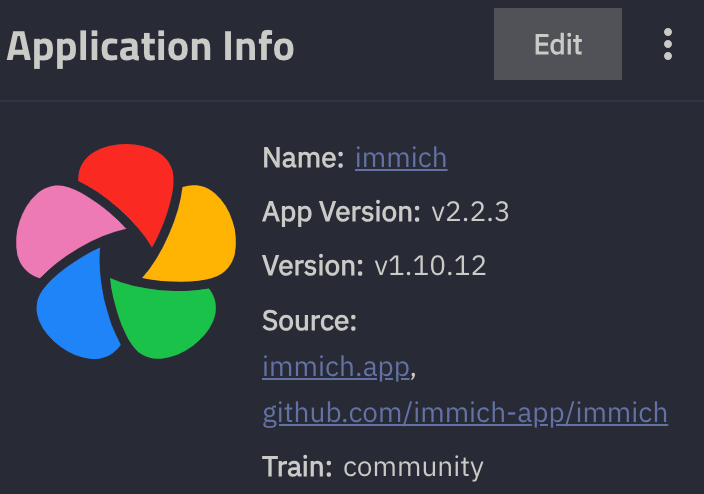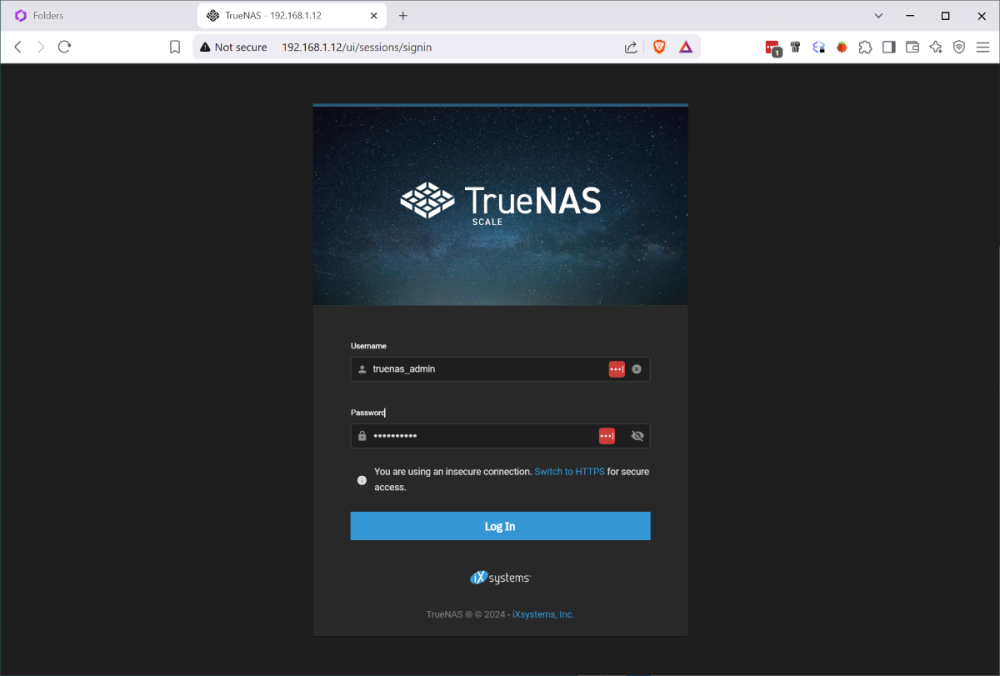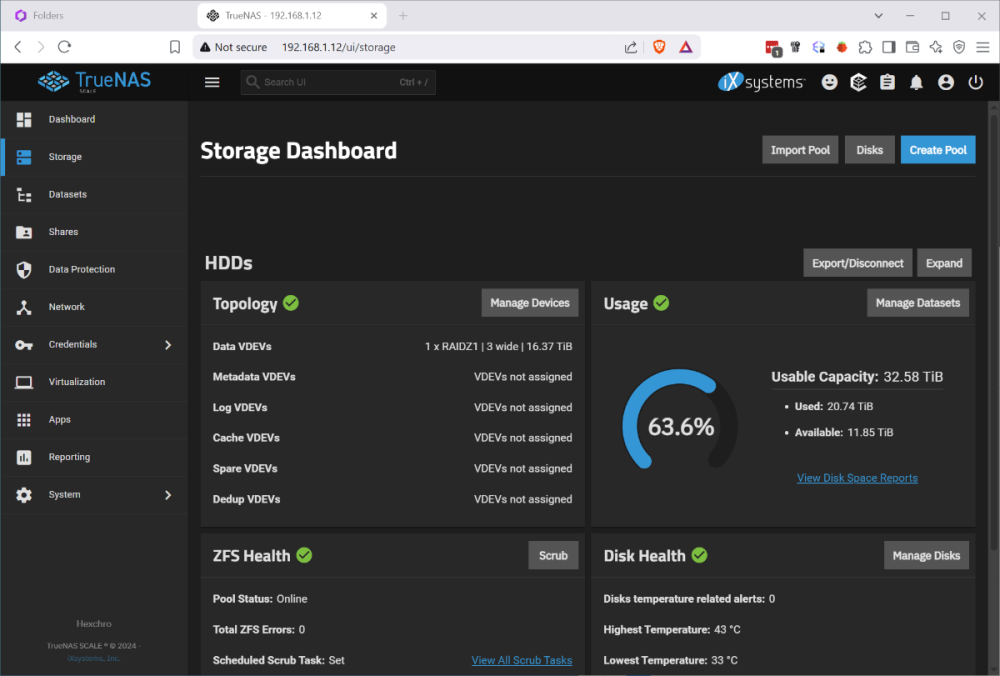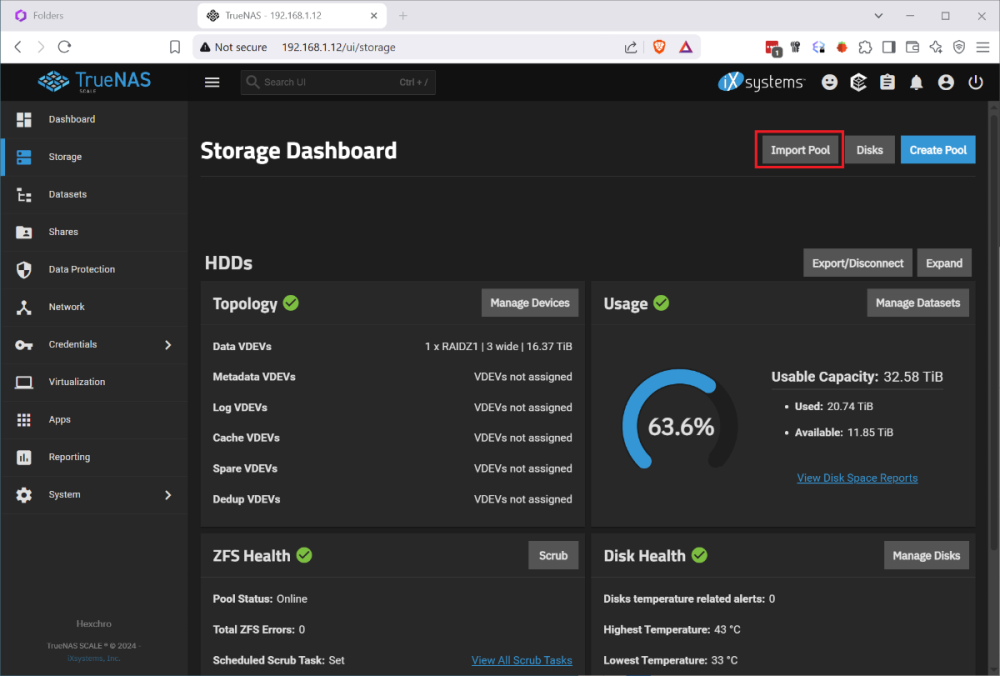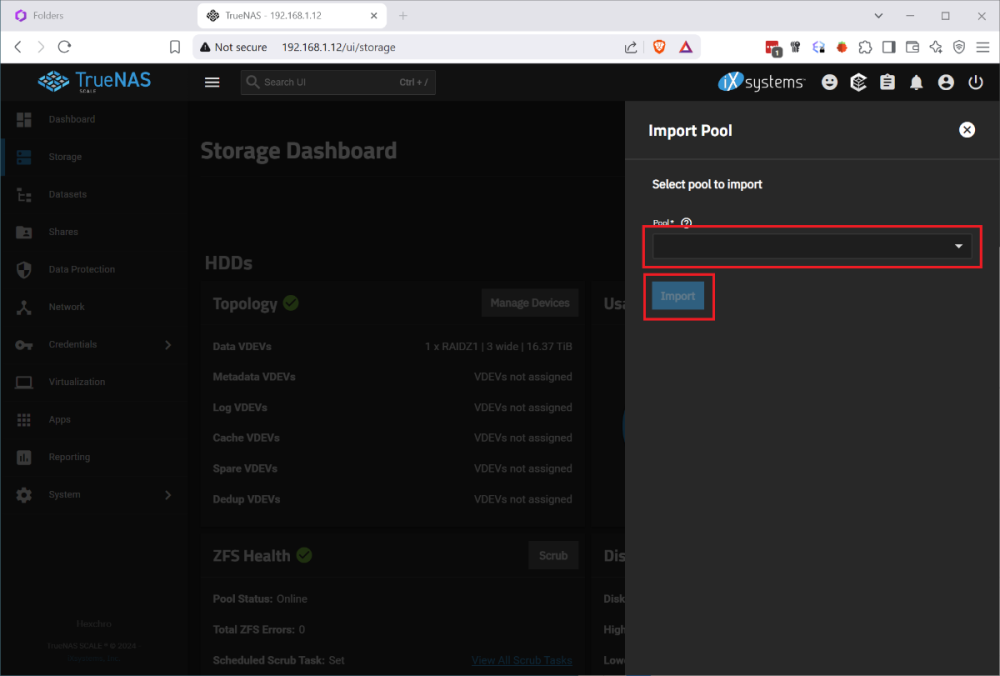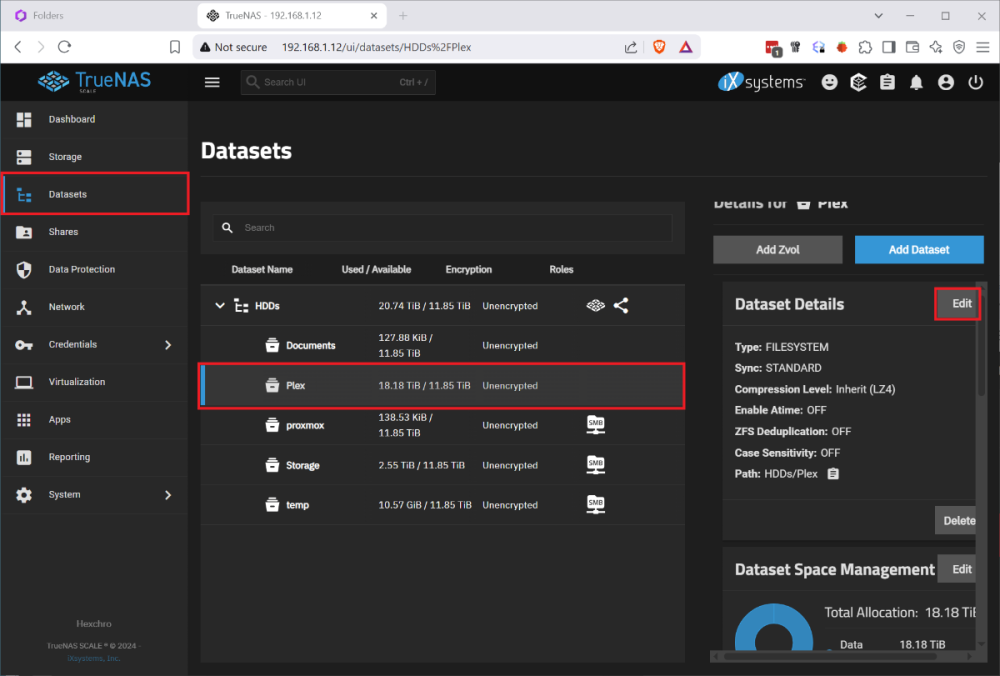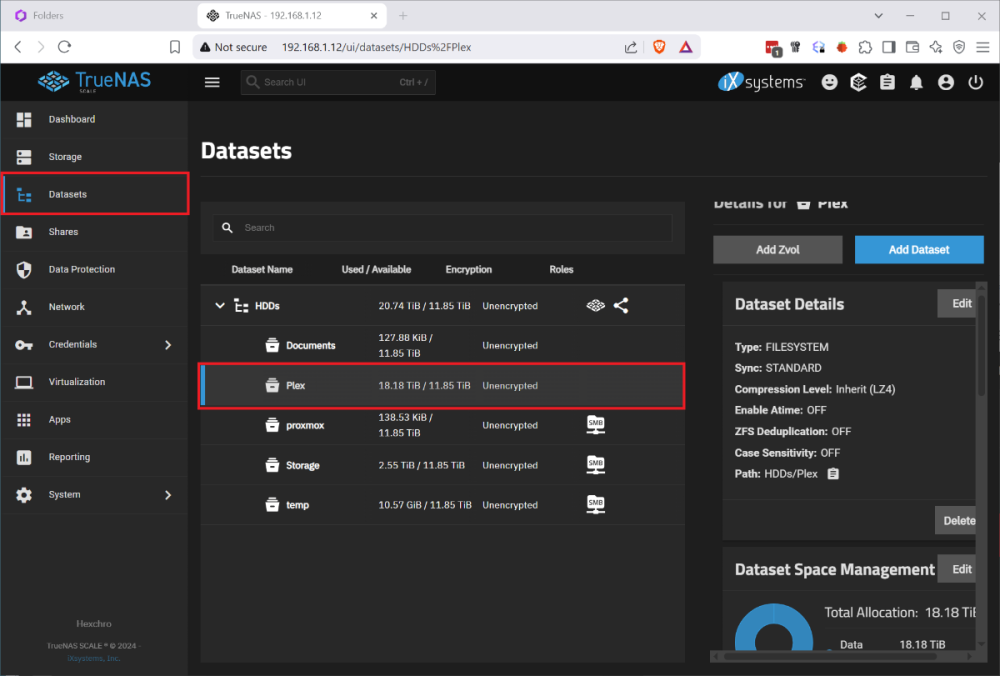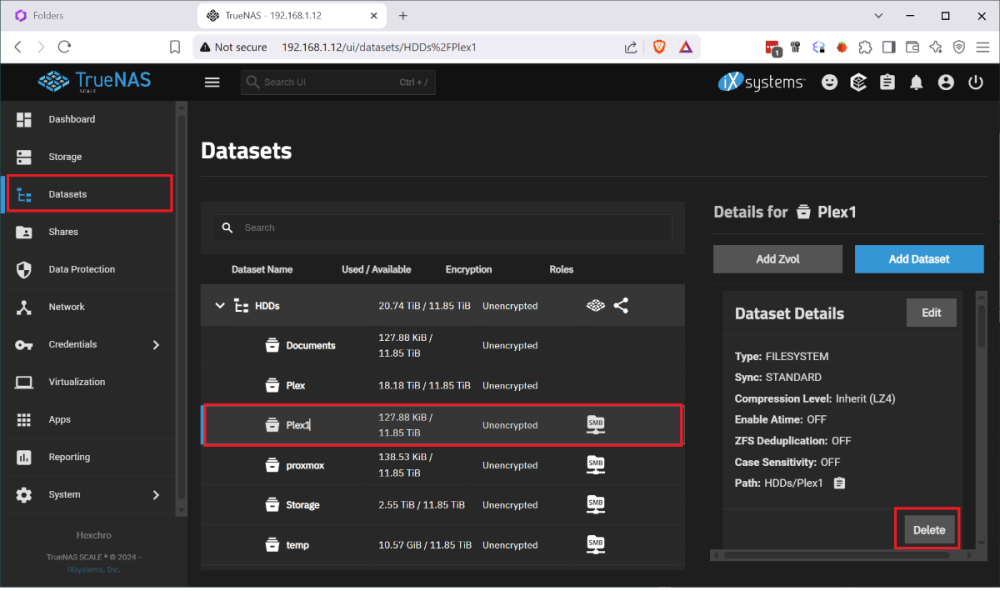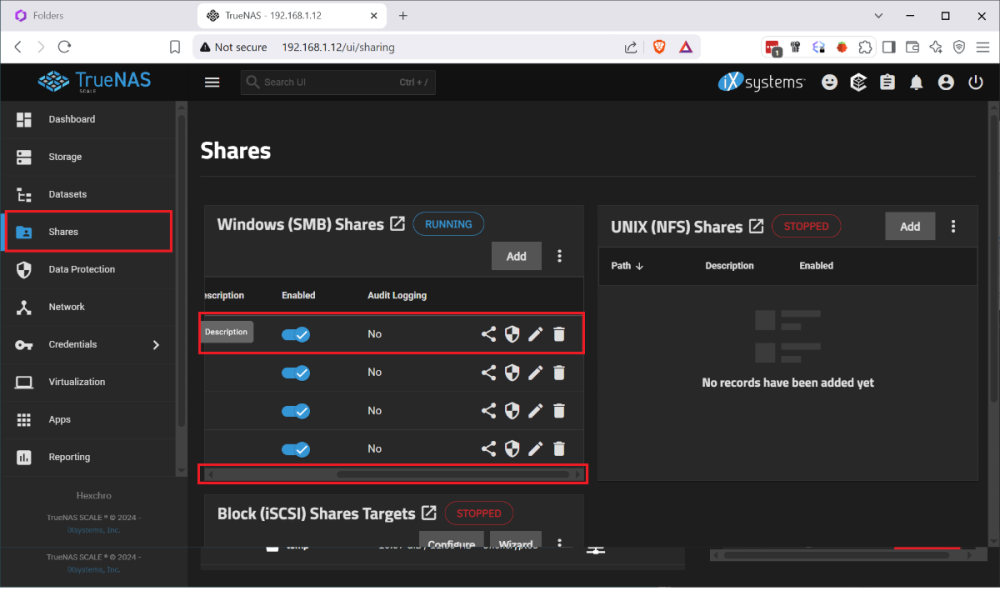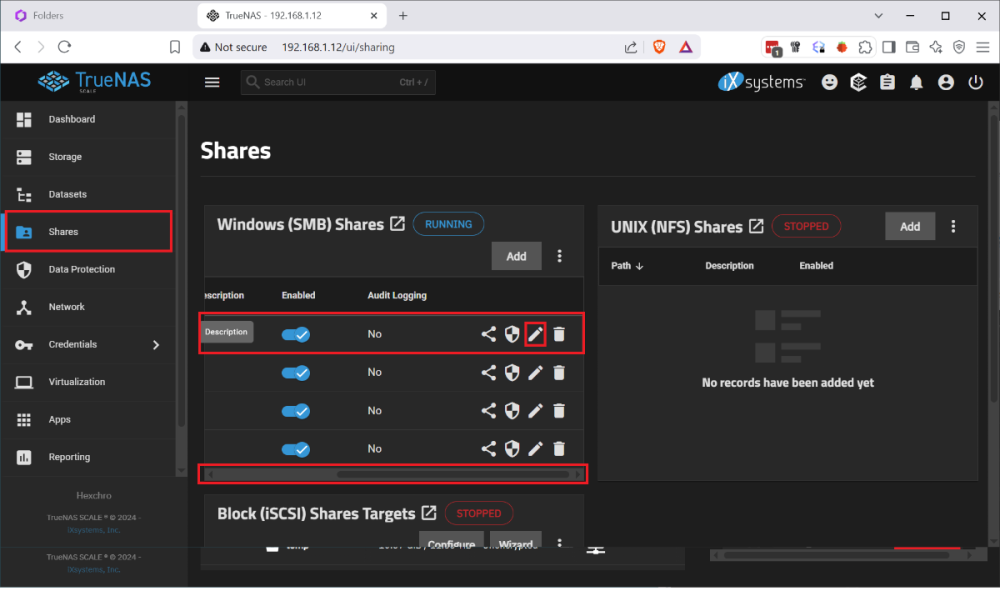Leaderboard
Popular Content
Showing content with the highest reputation since 10/26/25 in all areas
-
Let's Talk About Immich If you've been running Immich on HexOS this year, you know it hasn't been smooth sailing exactly. We want to talk about what's happened, why it was so challenging, and how we're working to handle these situations better in the future. What Happened? Earlier this year, Immich deprecated their old storage configuration and required all users to migrate to a new structure. For users running Immich through docker-compose or other manual setups, this meant updating some configuration files and running a few commands. Annoying, but manageable. For some HexOS users, the migration was more involved. Because of how TrueNAS SCALE structures application storage, moving to the new configuration required either reinstalling Immich fresh (the simplest solution) or manually migrating existing data between datasets (a process that involved SSH access, rsync commands, and careful attention to permissions). But if you're choosing between "reinstall the app" or "follow a 15-step guide," neither option feels great when you chose HexOS specifically to avoid that kind of complexity. Why Was This So Hard? When Immich made this change, we had a choice to make. We could have built a comprehensive rsync-based migration tool using the TrueNAS API. It has those capabilities. But that would have meant dropping everything else we were working on to build what amounts to using a cannon to kill a mosquito: a massive, complex solution for what we hope won't be a regularly recurring problem with this particular app. Instead, our community stepped up in a huge way. Users like @forsaken and @G-M0N3Y-2503 created detailed guides (to move or rsync your data). These guides walked through the manual migration process to preserve existing data in Immich. They focused on helping users through the immediate problem, while we continue building the platform we need to handle situations like this properly. That platform is HexOS Local: a locally-hosted management application that will let us perform complex operations without being bottlenecked by the engineering overhead of building one-off solutions through the SCALE API every time an application throws us a curveball. This reduces the technical burden on our team and, more importantly, gives us the flexibility to automate maintenance tasks that previously would have required manual intervention or massive engineering investments. This same platform will serve the Local UI/UX feature we've committed to delivering as part of our 1.0 release. We'll be talking a lot more about HexOS Local in an upcoming blog post, but the key takeaway is this: we're building HexOS to handle whatever the open-source ecosystem throws at it, without having to choose between "drop everything and build a custom tool" or "make users SSH into their servers." What About Right Now? If you're currently running Immich on the old storage configuration and haven't migrated yet, you have options: The simple path: Reinstall Immich fresh with the new configuration. Your photos will need to be re-uploaded, but the setup is clean and straightforward. The preservation path: Follow one of the community migration guides to keep your existing data in place. These guides are more technical and require command-line access, but they work. Our recommendation depends on your situation. If you have a manageable photo library and good backups, the fresh install is probably your best bet. If you have years of photos, carefully organized albums, and user configurations you don't want to recreate, the migration guides are there for you. And if this seems to daunting, email support@hexos.com so we can schedule a time to assist you directly. Moving Forward The Immich situation showed us exactly where we need to invest engineering effort. We can't keep facing the choice between building massive one-off solutions or asking users to break out the terminal. That's not sustainable, and it's not the HexOS we're building. Immich is an incredible project. It's exactly the kind of self-hosted solution we want to make accessible to everyone. The team behind it recently released v2.0, marking their stable release with better upgrade paths going forward. We're committed to making sure that when the next complex maintenance task comes up, whether it's Immich or any other application, we have the infrastructure in place to handle it gracefully. That's the HexOS we're building. Thanks for your patience while we get there.13 points
-
Another mid-quarter update featuring: - Install Script v2 with interactive questions during app installation to support user preferences (eg. Plex claim code) - Fangtooth Support with full TrueNAS 25.04 compatibility and automatic pool upgrades - Enhanced User Management with better visibility and access to folder permissions Read the full release notes: https://docs.hexos.com/release-notes/command-deck/2025-11-06 NOTE: This update was applied automatically. You may need to clear your cache.7 points
-
Hello all! We are excited to announce HexOS Local, powering the new local UI/UX for HexOS and capable of so much more. Read more about it on the Blogpost - Introducing HexOS Local6 points
-
Hey, Buddy Backup isn't currently available and Hexos doesn't offer anything to do a backup to another machine. However if you login to Truenas go to Data Protection and there to the Replication Tasks. You can setup a new Replication task there following this guide: https://www.truenas.com/docs/scale/25.04/scaletutorials/dataprotection/replication/ But this requires that you can connect to the other server, via tunnel or domain name or sth. Similar.3 points
-
Looks like we have 25.10 in the wild (https://forums.truenas.com/t/truenas-25-10-0-is-now-available/57343), hope we can see a HexOS update based on this soon...3 points
-
here are some low power server builds (not necessarily on hexos/truenas) https://docs.google.com/spreadsheets/d/1LHvT2fRp7I6Hf18LcSzsNnjp10VI-odvwZpQZKv_NCI/edit?gid=0#gid=0 These are just some general things to keep in mind you can can expect each hdd and ssd to add 2-7w at idle. not using a discrete gpu will save you 10-20w at idle keeping peripherals unplugged (monitor, keyboard, mouse) help a bit old amd cpus have trouble if c states are enabled. (c states are kinda sorta low power modes) fan power draw ads up skip the rgb3 points
-
Another mid-quarter update featuring: New curated app installations Update to the qBittorrent installation Read more about it on our docsite here at Command Deck Update - November 25, 2025 NOTE: This update was applied automatically. You may need to clear your cache.2 points
-
Hey I just finished my hardware migration and I'm happy to report it was successful. These are the steps I did: Log into TrueNAS SCALE web interface Go to System > General Settings > Manage Configuration > Download File If you have encrypted datasets, go to Datasets > select your encrypted dataset > Export Key Shut down server and swap hardware Prepare HexOS installation drive and use it to boot Set up HexOS/TrueNAS SCALE, I left everything on default In your router settings, give the new hardware the same IP as your old one. Restart your TrueNAS server to grab the right IP. Go into TrueNAS SCALE web interface, log in Upgrade your version of TrueNAS. At the time of writing this post, the HexOS installation image is behind of what's was being supported/recommend by the HexOS web interface. Check the filename of the .tar that was created when you exported the configuration. It should have the version of TrueNAS that was used in it (i.e. 25.04.2.6). Select the same version from the upgrade screen and confirm that you want to switch upgrade train. Apply pending updates and the system will reboot. Go to Storage > Import Pool > find your zpool Got an error? Check step 9 again. Make sure you are using the same version of TrueNAS as your old boot drive. Go into System > General Settings > Manage Configuration > Upload File After reboot, go to Apps > Configuration > Unset Pool Restart TrueNAS Go back into the web interface, go to Apps > Configuration > Choose Pool Your apps should show back up and you should be able to start them. Go to the HexOS web interface. If you haven't already, unclaim your old server and claim the new one The hardware check screen should give you a warning about an existing pool. This is good, go onto the next screen and skip creating pool. Give your server a name and you should be good to go! Really hope that HexOS has an easily migration process in the future. I have learned so much about TrueNAS that it's making less sense for me to use HexOS.2 points
-
Hey, No this has been fixed months ago, with the Q1 update I believe.2 points
-
Unfortunately there are 2 version numbers for the apps in the truenas app catalog. The "version" which is what you see in hexos, this is just the iteration of the truenas docker app which has nothing to do with the overall application which is also called "app version" you can see both of these numbers in the truenas interface if you would like but here is a screen shot My "version" is 1.10.12 but that is the same thing as "app version" 2.2.3 so we are not actually behind. i totally get the confusion though and ill be sure to bring it up with the team. Just to clarify a few things Truecharts is a third party app store that afaik shut down and was never compatible with hexos All the apps you see come from the Truenas apps market which i believe is first party to truenas HexOS unfortunately does not have any control over app versions (as much as i wish we did for troubleshooting), this is all truenas2 points
-
In addition to what M said, low idle power draw doesn't necessarily mean, low performance hardware, modern high performance HW also has amazing power savings potential & idle power draw, so you don't need to go low performance, or old HW. Some easy wins are disabling unused HW/parts in the BIOS (Audio, onboard NIC if a dedicated NIC is used, Wifi etc...)2 points
-
2 points
-
Right side but the toggles should closer to the words like they are on the Left version. half the width of a monitor is too far away2 points
-
Great to see the progress being made compared to the early launch last year, I'm exited to see where it goes with the new upcoming roadmap. While I'll personally will be waiting till a few more curated apps will be available (such as Kometa and Bazarr) it seems at least a good solid foundation will be standing with the 1.0 launch. Keep it up guys!1 point
-
If there are still a plethora of users affected after Local is released, we would consider it. But if not, we would rather spend the time via support helping people up over this fence than engineer an entire solution for a handful of folks. Support@hexos.com is available to you at no cost.1 point
-
I tried following the recommended guides - frankly too time consuming/complicated for a non-technical person. Instead I went the uninstall/reinstall route, it's very easy if you can backup/re-upload your content (which takes forever 😑). The below post explains how to reinstall. It requires re-creating users/settings and logging in again on the mobile app.1 point
-
If you guys are stuck, please email support@hexos.com and we will schedule a time to work with you on this.1 point
-
I wonder if Eshtek is ready to have an app store separate of TrueNAS. This would require them to have a much larger responsibility in situation where an apps author make a move like the Immich issue. This doesn't seem to be likely because what does Eshtek get for this immense extra effort? Just more work and responsibility it seems.1 point
-
Hmm. It sure seems it took a long time to come to this. And along the way many have already rejected this uninstall/reinstall approach assuming you would eventually have to fix this. Since this is a situation that we are most likely to encounter again do you have a plan to get the Eshtek response out before the forums are reduced to a dozen large arguments? You may not know what issues are coming but you do know months of silence has proven o be a bad situation.1 point
-
That thought did occur to us, but to be perfectly honest we'd rather anyone not comfortable following the guides or having difficulty to just contact us directly for support. That's what you all paid for and we are gonna provide it. I don't want to start asking our users who aren't comfortable to navigate the TN interface.1 point
-
Hey it would be cool to have a straight forward way to install Nextcloud (e.g. the all in one edition https://nextcloud.com/blog/how-to-install-the-nextcloud-all-in-one-on-linux/) on HexOS. I set it up myself on my homelab, but the setup was not as easy and while the software itself works great, I'm not as satisfied with my implementation. It offers a lot of features with a client that is available on a lot of devices already, essentially substituting Cloud storage, Google Calender, Contacts, Office products, Slack (e.g. for small businesses) and as I just saw even LLM like ChatGPT. This would add huge additional value to HexOS, since you easily could substitute a lot of subscriptions that way, while having enormous privacy benefits, a thing the target audience of HexOS would surely profit of. Especially if there is also a way to safely expose it to the internet.1 point
-
Hey, It seams to be possible to use a GPU with multiple apps, but you need to login into truenas to do this: https://www.truenas.com/community/threads/can-multiple-apps-utilize-the-same-gpu.99757/#post-7128761 point
-
Hello! Are there plans for HexOS to allow users to use (mirrored) SSDs for ZFS' tiered storage optimizations? The main three uses I'm thinking of: Enable high-endurance mirrored SSDs to accept synchronous writes (SLOG) Enable mirrored SSDs to store all file metadata (special vdev) Enable mirrored SSDs to store all small files (special vdev) While I'm sure popping into TrueNAS (for those with that experience) would work, I think implementing these directly in HexOS would be quite beneficial even for consumers with many small files and / or macOS devices. While not all performance-based vdevs are helpful in most scenarios, these would be great, especially the special vdev for small files, e.g., use the ultra-fast random access of SSDs for video editing project files or documents (special vdev) and especially the SLOG vdev for macOS SMB writes (always sync writes). Of course, in some far and away future, HexOS would identify when these vdevs would significantly improve performance, but manually turning them on & testing them out would also be neat through HexOS. I'm intentionally ignoring L2ARC, which requires much more careful hardware selection & tuning to get any benefit.1 point
-
Thanks for confirming. I managed to successfully upgrade last night using the rsync method. Although I had to research how to do the SSH part, perhaps you could add this instruction for others? Otherwise the method comes across as very intimidating when in fact it was relatively straightforward.1 point
-
apple silicon seems amazing and sometimes i can't shut up about how it would be amazing if i could run a home lab on apple silicon or apple comes out with a gaming handheld. looking forward to hearing what hardware you end up on. most important piece of advice is before you commit to your parts list, you should post it here and see if anyone has any recommendations. so many little things to keep in mind that are non factors when building say a gaming pc.1 point
-
hmm at this time these options can only be done in truenas ui. i would imagine at least some of the options should come into hexos ui but i will check in with the team for you1 point
-
I’ve changed the default port numbers on my TrueNAS web server to free up ports 80 and 443 for other services. However, from the HexOS portal, it still tries to connect using the standard ports when interacting with TrueNAS. For example, if I try to edit an app’s configuration or launch the TrueNAS configuration from the portal, I don’t get the correct interface. It would be great if the portal could detect the configured port numbers via the API, or allow these to be set manually in the HexOS settings.1 point
-
its been a while since i created an installer to check whats on it and i can't find mind at this moment but its normal for os installer usbs to have multiple partitions1 point
-
Might want to have https://hexos.com/blog/ redirect there also. Navigating directly still goes to the old blog.1 point
-
Thank you to you and everyone that put together these tutorials. I was excited to give this a try, but even with the tutorials, this seems to be a less than straightforward process. On the first guide linked, I immediately encountered discrepancies between how my Truenas was configured/behaved and how the guide assumed your Truenas would function. First, the dataset I created did not seem to have the same "strip ACLs" button shown. My permissions section looked a little different as a result, but I feel comfortable tweaking the list manually to make it match the guide. The bigger issue for me was that I couldn't get my computer (MacOS via terminal) to SSH into the Truenas server. I kept getting a permissions denied error. I tried a small amount of googling, but I'm not sure I have the time or patience to try to attempt this. The second tutorial seems a little less beginner friendly. I thiiiink I could try to figure it out, but immediately after my first attempt of tweaking the permissions, I'm getting endless "operation not permitted" errors in the terminal. This is clearly user error on my end, but I wanted to post this for other HexOS users here - I definitely feel like I am the target audience of introductory homelabber that doesn't care to tinker with these things and I wanted to share my experience for other's visibility before they invest the time themselves. Unfortunately, I think it will be a better use of my time to wipe and start over on my immich backup. Hopefully they stay true to their word and this is the last time they make this sort of change, or I will probably look elsewhere for backing up my photos in the future. Thank you again to those that took the time to try to document guides on this process!1 point
-
I am not a beta tester, i know i bought a beta test software. My issue is that after almost a whole year i can scan the forums and most issues someone will state, you will need to access truenas to fix it. If i need to access the free software to fix the paid software then I been duped and mislead after a year.. I can see that the team has curated a few more apps and that's great, but I gave yet to see the VM workspace. Will that be a 1.0 release or 2.0, 3.0 etc.? Yes, I understand this is beta but I need more meat than little morsels here and there. Honestly I'm just blabbing I don't run hex because the only reason I got hex OS is to not have to figure things out in truenas and creating simple shares for backup failed and i had to access truenas to fix permission. At that point i gave up and would rather use my electricity for something else. Don't get me wrong im waiting for the day that i can just point and click and be done.1 point
-
Could we get a forum section for install scripts? That way as a community we can post a thread for a specific app and people can share their scripts and ask for feedback? I think that'd be handy, but I don't think it needs to go in the normal Applications support forum because that might confuse people as it's definitely a more advanced thing at the moment! Thanks1 point
-
Additional Apps We’ve just added Jellyfin, Home Assistant, and qBittorrent! And this is just the beginning, thanks to our new curation process, we expect many more apps to come online soon. Intro to App Curation We've added an interface to the HexOS frontend to make iterating on apps easier and to let the community contribute their own curations. By enabling Dev Mode in Preferences, you'll unlock the Custom Script option for app installs. From there, you can tweak existing install scripts or create new ones then share them with friends or submit them to the official HexOS curation templates. Right now, the feature focuses on streamlining the app install process. Soon we plan to surface installer questions directly in the UI and automate post-install steps (such as in-app setup wizards). That work depends on the in-development Local UI project, we will share more news about this in the future. We'd love your feedback as we refine this, let us know what's working well and where you're running into friction. Official Docs We've launched a documentation site! This new resource brings together everything you need to know about HexOS, including getting started guides, feature documentation, troubleshooting help, release notes, and community resources. Along with App Curation, we are opening the docsite up for community contributions. Learn about how to contribute here. - Docsite contributions - App Curation Folder Wizard Arrives We've extended our simple folder creation interface with a new wizard-driven process that unlocks specialized use cases like encrypted folders and Time Machine backups. With this foundation in place, we're now ready to move forward on bigger features including Snapshots, Replication, and Buddy Backup. First Flight Updates We've made improvements to First Flight, our onboarding experience, to help new users get up and running with HexOS more easily. Key improvements include: - Progress Tracking: When you complete tasks shown in the First Flight modal, it will pop up again to show you which tasks you've completed and what's still left to do - Persistent Banner: A banner now lives at the top of every page, keeping First Flight guidance accessible throughout HexOS This feature is designed to make the HexOS onboarding process a little more intuitive, especially for users new to home server management. --- NOTE: This update was applied automatically. You may need to clear your cache. Help with clearing you cache is available here.1 point
-
Thank you for your reply, @Mobius. That does make sense. To your final note, hopefully by stable, if we manually create these vdevs in TrueNAS, they can play nicely with HexOS. — I agree: I believe folks recommend the special vdev to have the same redundancy as the data vdevs; if it were to be added, hopefully that recommendation could be prominent. I've heard mixed things about performance: for many-file directories, it can feel snappier, which is what I hope. SLOG: ah, I had another angle. My main interest are a couple of wired Macs on our network as Macs write to SMB synchronously (straight to HDDs), without fast RAM-first writes like Windows machines. But with an SLOG, Macs write to this faster SLOG vdev, allowing the transfer to complete faster. So with an SLOG, Macs have virtually identical write performance as Windows. But without the SLOG, Macs write a little slower. We definitely use a UPS; it's a solid investment for data integrity as you get PLP for the whole server! A great recommendation.1 point
-
I would like to see first party support for placing any app behind some of the most popular VPNs (PIA, Nord, Express, Proton, Tailscale, etc), as well as custom VPNs (WireGuard, OpenVPN, etc). For example, you may install “The Lounge” IRC client and have all internet communication pass through a PIA VPN so that your home IP is not exposed while chatting. Traditional methods of doing this involve painful configuration of iptables or other firewall rules. I believe this is an area where HexOS could really simplify things: Install a VPN plugin, authenticate with it, and then simply assign an app to a VPN plugin via the app’s settings if desired. It would be fully accessible from the home network without going through the VPN, but all internet traffic would go through the VPN with a kill switch in case the VPN goes down. Thoughts?1 point
-
I ran into the issue that my boot drive was corrupted and I had to restore my HexOS install from scratch. I found posts that said basically just reinstall it but nothing that explained the process. I had several issues, when I reinstalled HexOS it wanted to wipe my raid, once i disconnected the raid and went through the initial setup, I had no shares. So I wanted to document this so that others with this issue find a solution instead trying to rename and recreate shares and move data between datasets. This was done after I figured out a process for doing this so sorry if I missed any steps. Step 1. Remove the bad boot drive. Step 2: Disconnect the Raid drives. Step 3: Install your new boot drive and usb HexOS install media. Step 4: Follow the standard install process, including setting your admin account and claiming your server. When you finish the setup you will not have any disks so you will name your server and just continue. Step 5: Shutdown the system. Step 6: Reconnect your raid drives and boot up. Step 7: Log in to the TrueNAS gui by going to the IP address of your server in the browser and using the credentials you set up during install Username: truenas_admin Password: <whatever you entered at install>. Step 8: Go to Storage Tab and select Import Pool. 9: Select your pool from the drop down it should be named 'HDDs' and select Import. It will take a few minutes to import and complete. At this point the storage should be detected in HexOS and you should be able to start creating shares, but your existing folders and shares will not have returned. To get your shares back you must recreate them by renaming your datasets and naming them back as follows: Step 1: Under Datasets you can find all of your existing data on the RAID. Find the Dataset you want to restore in HEXOS and note the name. Step 2: Back in HexOS go to the Folder tab and select 'New Folder' Note: you may want to recreate your old users manually or create your folders with public access and recreate the users and add permissions later. Step 3: Create a new folder with the same name as the Dataset but add a 1 (In this case 'Plex1'). Make sure to keep the array the same 'HDDs; and give it the permissions you want (this can be adjusted later). Step 4: Back in TrueNAS go to Shares and select the edit button on the 'Plex1' share, depending on screen resolution you may need to scroll the horizontal scroll bar to the right. Step 5: In the side bar remove the '1' from the Path or use the drop down to select the original shared folder, then click into the Name field which should auto update and remove the 1. Step 6 Scroll down and click 'Save' and you will be prompted to restart the SMB service, do this and your share should be updated. Step 7: Navigate to the dataset tab select the 'Plex1' dataset and click delete on the right side. It will make you confirm by typing the whole dataset path. Step 8: When this is done you should be able to refresh the folders tab on the HexOS page and see the updated folder name (it took a minute to refresh for me). Redo this for each share that you wish to recreate. Once I did this and set up the users and permissions correctly, other servers I used to connect to my shares started working seamlessly. I didn't experience this but I can imagine you may run into some permissions issues since the new users in HexOS could have different IDs than before. Unfortunately you would need to manually adjust permissions on the files and folders. P.S. I imagine minutes after posting this someone will tell me I am dumb and should have done it this way, or someone else posted better over here. If that's the case let me know and Ill point to a better example, but when I needed help I couldn't find it.1 point
-
I believe integrating Home Assistant with HexOS could be a game-changer for the operating system, offering functionality that is sorely lacking in almost all other OS platforms today. A Home Assistant integration would allow users to monitor and manage their NAS more effectively. Imagine being able to track critical metrics such as system uptime, array health, disk health checks, and the overall status of your storage systems — all from within Home Assistant. Furthermore, adding control features would significantly enhance the user experience. It would be fantastic if users could automate tasks like rebooting or stopping/starting applications, VMs, or containers directly through Home Assistant. Additionally, automating disk spin-downs during off-peak hours for power savings would be a powerful and eco-friendly feature. The potential of Home Assistant integration is vast, and it's difficult to fully capture all the possibilities in a single topic. However, the core idea is simple: having such an integration, with continuous updates and new features, would be a major advantage for HexOS. While most other operating systems either lack similar functionality or offer only basic, limited capabilities, HexOS could stand out by providing a more comprehensive, user-friendly, and flexible solution.1 point
-
In case there is any confusion still on this topic, a local UI is coming...100%. We actually have already begun work (we have a docker container with the UI running at this point, but it's not fully functional yet).1 point
-
It is a must these days to have TailScale support, especially for secure remote access. It is far too easy to mess up a WireGaurd/OpenVPN Config, if the goal is security and simplicity, Tailscale VPN access should be a high priority.1 point
-
@Dylan Thank you for your help! It really helped me get a better understanding of the bigger picture in regards to all this, and it helped me kinda jerryrig my own solution to it. Thing is, shortly after installing the OS I had also decided to update truenas scale, which I found out later that it isn't recommended to do so. It didn't break anything for me at least, so I just figured it's all good. But after having wrestled with the guides you sent me, and stumbling upon a random reddit thread, I ended up finding out that the issue causing this whole mess was that I had basically done a "default installation" of pretty much everything in Handbrake when doing it via truenas scale. So part of what the latest version of electric eel (truenas) did, was change how the apps are handled - and how they are placed, which is more relevant for this - which messed with how handbrake sets up storage paths to "watch" and output from how it's installed. The people in the reddit thread were talking about how it's essentially a "1-click solution" to change the already-existing apps to fit that update, but they didn't really talk much about when installing from scratch. Which is where that guide by Theo about radarr and sonarr really helped out, because it made me familiar with the finnicky nature of the storage options and premade datasets when installing something. So this is what solved it: (I had already deleted handbrake quite a while ago, so at this point it's without the app installed) I made a dataset for handbrake, in /mnt/HDDs/Applications/ with permissions set to user, group, and other, with root and read/write/execute (I figured why not, I didn't really feel like taking it one permission at a time and I'm fine with leaving it as it is now, but up to you (the reader) if you want to be more cautious about it). I did not make a config sub-dataset like the sonarr/radarr guide suggests for sonarr/radarr. I then installed handbrake with mostly the default options still as they are. However, I left the config storage to iXVolume because I figured it's not something I need to be messing with anywhere other than in the UI for the app and there it was already working fine previously - and then I changed all of the other storage options to Host paths with a folder I've set up myself. (I should've made more folders for it in order to separate the pre-encoded from the re-encoded video files, but I just wanted to get it over with to see how it goes.) So I gave it a shot, and it works fine now. Well, kind of. I still can't see the HDDs folder, although I could at one point during my trials and errors but then it wouldn't give me access so I decided to try something else. But now the built-in view of "storage" in the app's UI can see the video files just fine, in a place where I can place them; because Applications isn't accessible (nor viewable) to place files in, which is where I'm guessing Handbrake had assigned as its "storage" pathway before. Anyway, lesson learned without too much harm done, that I'm gonna have to mix things up a bit to work with the updated electric eel version of truenas scale, since HexOS is still meant to be used with the version it came with during its installation. Thank you for the help! It did push me in the right direction.1 point
-
Could be me but I do this at a router / switch / vlan level. It also allows for monitoring and delegation a bit easier1 point
-
1 point
-
Sorry, if this has been asked before & posted elsewhere. Would be handy to have app support for steam caching, especially for big/medium family's/house hold share. I can understand this will not be on the radar as yet, while sorting other issues out/beta etc1 point
-
Agreed. When creating a VPN connection, have options to route specific apps with this connection, or the whole system, or whole system but exclude specific apps.1 point




